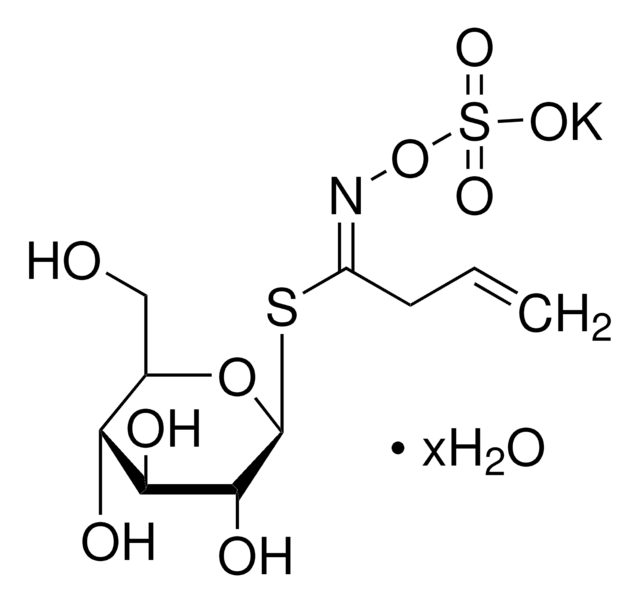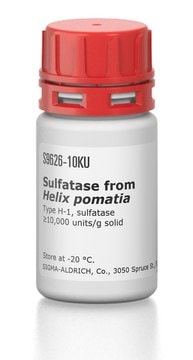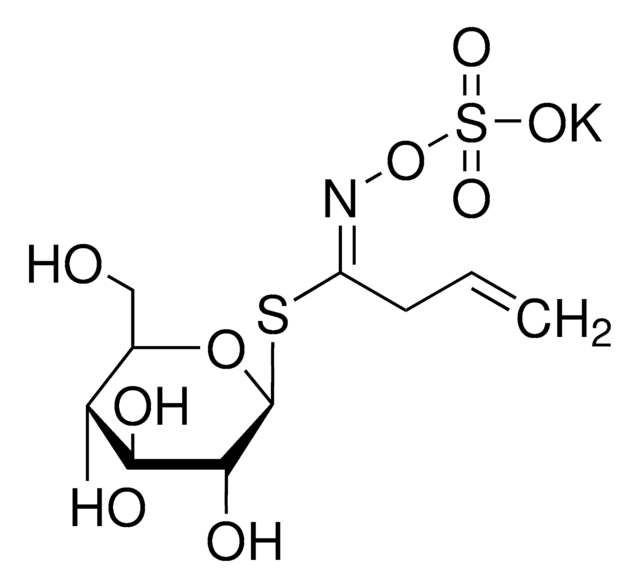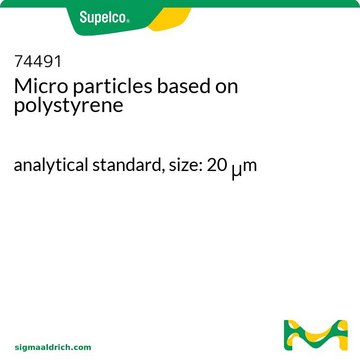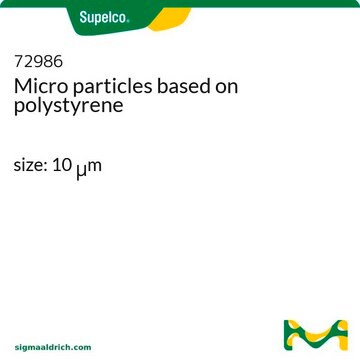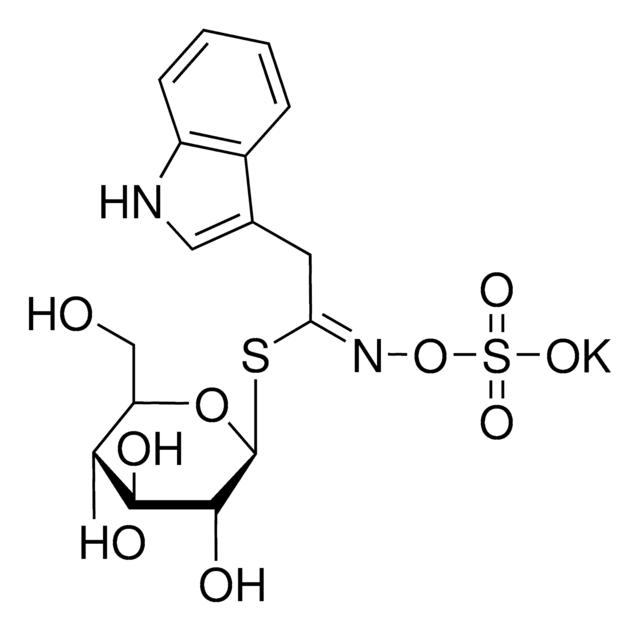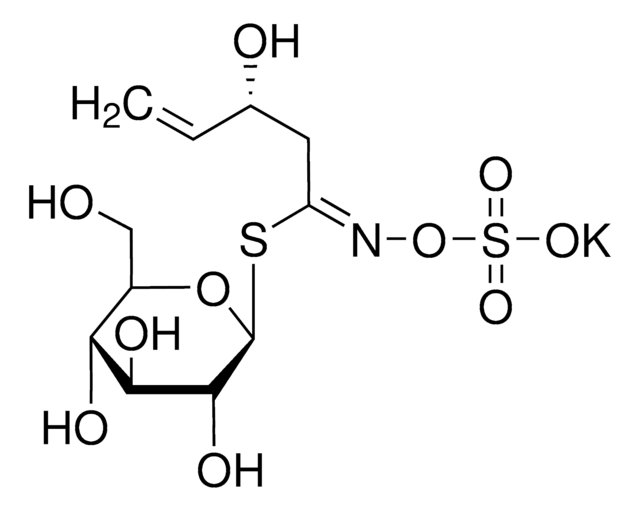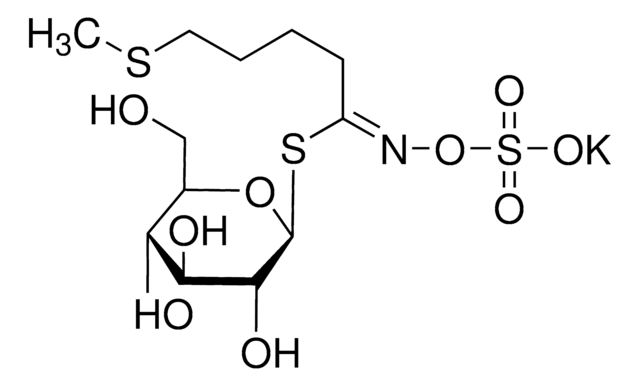About This Item
Recommended Products
biological source
plant (Brassica nigra)
Quality Level
Assay
≥99.0% (TLC)
form
powder or crystals
optical activity
[α]20/D −17±1°, c = 1% in H2O
technique(s)
thin layer chromatography (TLC): suitable
color
white to faint beige
mp
128 (dec.) (lit.)
cation traces
K: 8.4-10.8
storage temp.
room temp
SMILES string
[K+].[H]O[H].OC[C@H]1O[C@@H](S\C(CC=C)=N\OS([O-])(=O)=O)[C@H](O)[C@@H](O)[C@@H]1O
InChI
1S/C10H17NO9S2.K.H2O/c1-2-3-6(11-20-22(16,17)18)21-10-9(15)8(14)7(13)5(4-12)19-10;;/h2,5,7-10,12-15H,1,3-4H2,(H,16,17,18);;1H2/q;+1;/p-1/b11-6+;;/t5-,7-,8+,9-,10+;;/m1../s1
InChI key
IUBVMJHASFBYGW-WBMBWNLZSA-M
Looking for similar products? Visit Product Comparison Guide
Application
Biochem/physiol Actions
Other Notes
Signal Word
Warning
Hazard Statements
Precautionary Statements
Hazard Classifications
Skin Sens. 1
Storage Class Code
11 - Combustible Solids
WGK
WGK 3
Flash Point(F)
Not applicable
Flash Point(C)
Not applicable
Personal Protective Equipment
Choose from one of the most recent versions:
Already Own This Product?
Find documentation for the products that you have recently purchased in the Document Library.
Customers Also Viewed
Our team of scientists has experience in all areas of research including Life Science, Material Science, Chemical Synthesis, Chromatography, Analytical and many others.
Contact Technical Service